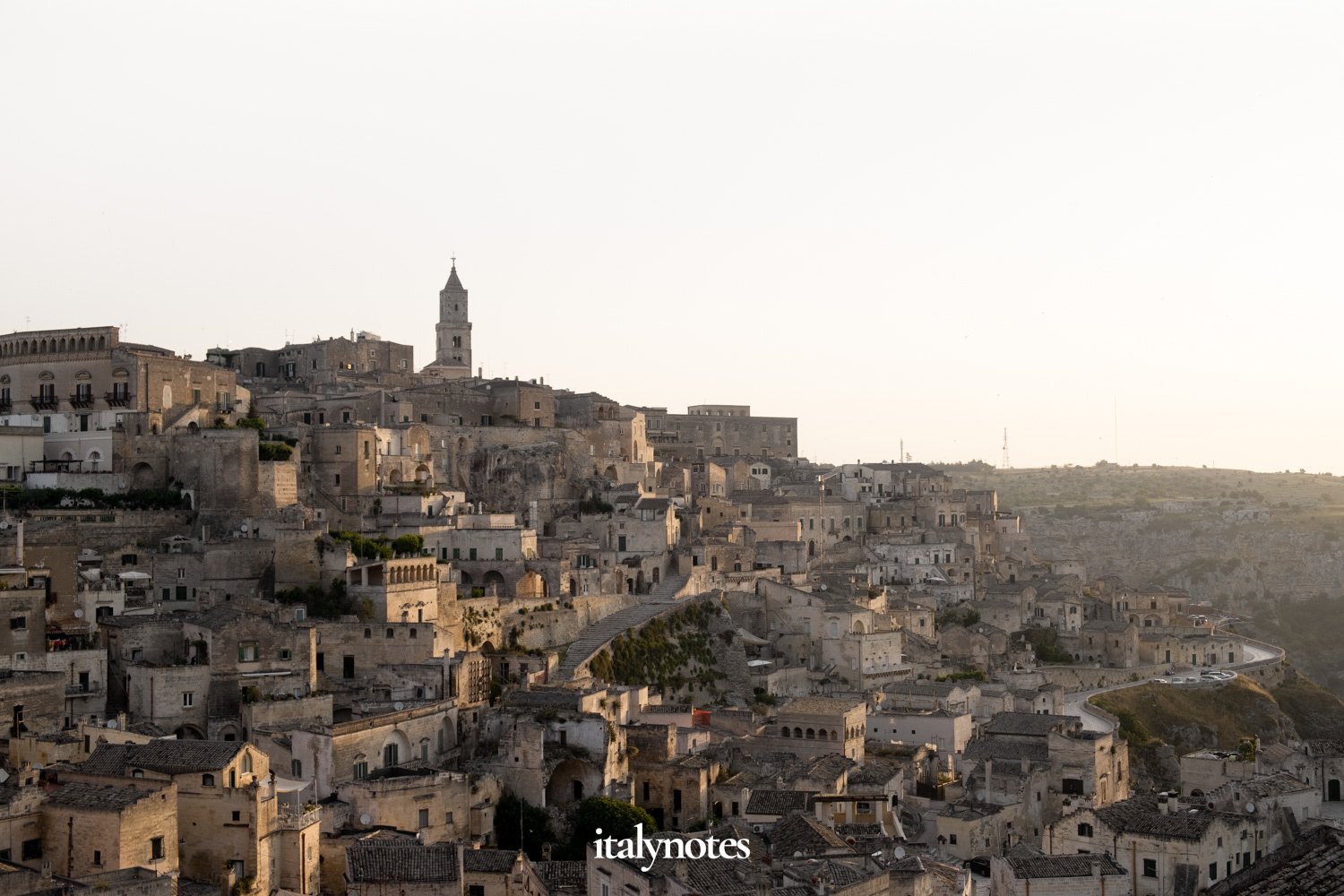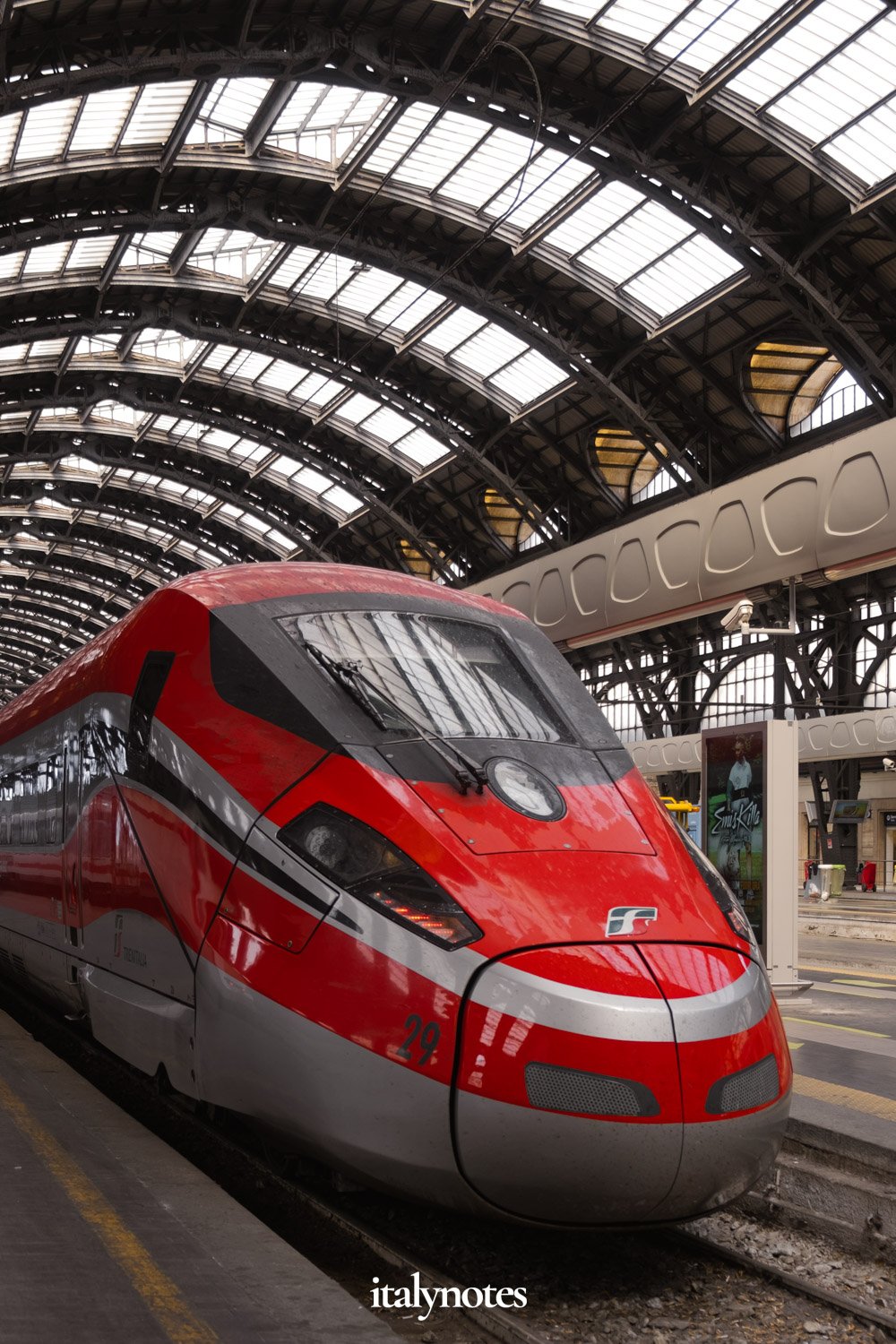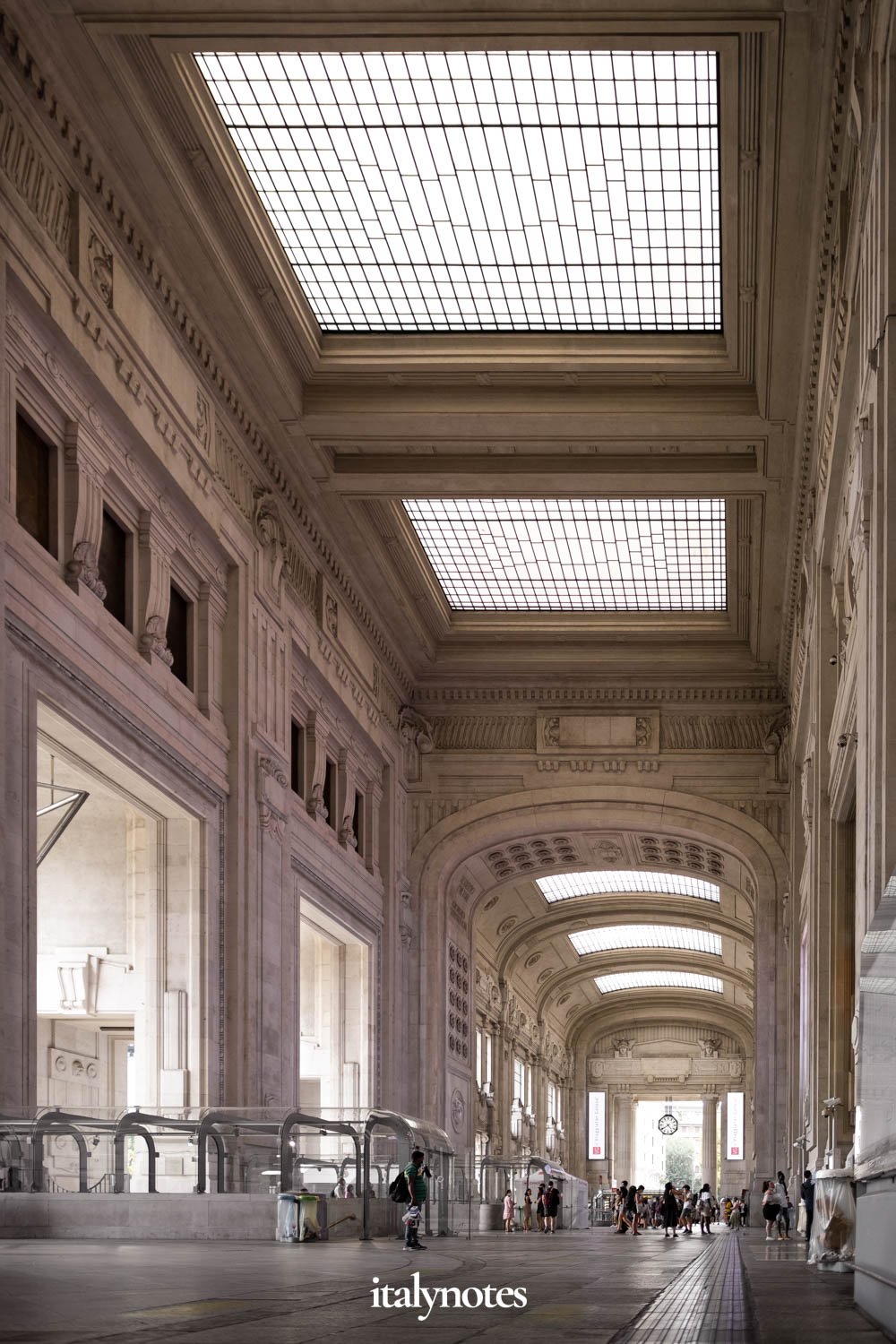Traveling Italy by train: everything you need to know
Last updated: October 2023
When it comes to traveling through Italy, my preferred mode of transportation is the train. The extensive train network connects nearly all major and medium-sized cities, often with train stations conveniently situated in or near the city center. Not to mention, train travel offers a significant time advantage. For example, a train ride from Milan to Rome takes around 3 hours, whereas covering the same distance by car would take roughly 6 hours.
Moreover, it's often a much more budget-friendly choice, sparing you the expenses of renting a car, insurance, fuel, toll fees, and parking.
Siracusa train station, Sicily
Of course, there are some downsides as well. Many small, picturesque villages and stunning landscapes lack nearby train stations. So, if you plan on exploring the Italian countryside, opting for a car is more advisable.
But let's move beyond discussing the pros and cons. In this beginner's guide, I'll provide all the essential information you need to get ready for your first train ride. All aboard!
Start planning your trip
Italy's primary train operator is Trenitalia, so using their website or app is the most straightforward option to plan your trip. Personally, I find the Trenitalia app to be the most convenient option, as it stores your purchased tickets and provides real-time updates on crucial information like delays and platform numbers.
Apart from Trenitalia, there are several other train operators, such as Italo. Just like Trenitalia, this operator provides high-speed train services connecting Italy's major cities. To get an overview of the trains provided by both operators, as well as options from bus companies like FlixBus, I'd recommend checking out Trainline (www.thetrainline.com).
Planning my next trip using Trenitalia's website.
The websites mentioned above and the app all work in a similar manner. Just enter the names of your departure and arrival stations, and you're all set! As you might expect, Most larger cities have multiple train stations. To help you navigate, here are the names of the main train stations:
Milan, Milano Centrale
Turin, Torino Porta Nuova
Venice, Venezia Santa Lucia
Bologna, Bologna Centrale
Florence, Firenze Santa Maria Novella
Rome, Roma Termini
Naples, Napoli Centrale
Lastly, some regions have private train companies that exclusively operate on a local scale. These include the Ferrovie Appulo-Lucane (connecting Bari and Matera), the Circumvesuviana service (connecting Naples, Ercolano, Pompeii, and Sorrento), and the Cinque Terre Express.
Early morning in Matera. To reach Matera, take the Ferrovie Appulo Lucane (FAL) -operated train from Bari. This train departs from a different train station located next to Bari Centrale in Piazza Aldo Moro.
Types of trains
Once you've entered your departure and arrival stations, you'll notice that you have various train options to choose from. However, the question remains: which one is the best fit for your journey?
You'll encounter several train categories in Italy, ranging from high-speed to regional ones. The most suitable train type for your journey will depend on your destination, available time, potential train transfer intervals, and, naturally, your budget. Below, I've outlined the various train categories.
Frecce high-speed trains. These trains connect Italy's major cities. Three types of high-speed trains are available: the Frecciarossa, Frecciargento, and Frecciabianca, with the Frecciarossa being the fastest among them. Reservations are mandatory for Frecce trains (included when buying a ticket). I recommend securing your reservations in advance to take advantage of lower-priced economy or super-economy fares, potentially saving you up to 60%!
Intercity trains. Intercity trains serve large and medium-sized cities. Just like the high-speed train, a reservation is required (included when buying a ticket). Most of the time, booking shortly before departure is not a problem.
Regional trains. As is common in most countries, regional trains serve both cities and smaller towns. While they may take longer to reach their destinations, they are an excellent choice for exploring some of the rural parts of Italy and are budget-friendly. Regional trains don't require a reservation, and some even offer only second-class seating.
Second-class coach on a Frecce high-speed train (left), Frecciarossa (right)
How to buy a ticket?
Once you've decided which train suits your travel plans, it's time to purchase your ticket. There are three methods to choose from:
The most convenient option is to get your ticket via the Trenitalia website or app. Following your purchase, you'll receive an e-mail containing your ticket in PDF format. If you're using the Trenitalia app, you can find your ticket in the 'My Journeys' section. It's important to note that as of September 2023, digital tickets for regional trains require validation before boarding. I'll provide instructions on how to do this below.
If you prefer a printed ticket, you'll typically find a ticket office at most major train stations. However, it's worth noting that there can be significant queues, especially during peak seasons. Waiting times of over 30 minutes are not uncommon in my experience.
Fortunately, there's a third option available: the ticket machine. These machines are user-friendly, and you can switch the language to English (and a few other languages). They accept both cash and cards. Be aware that you might encounter individuals offering assistance. If they aren't wearing a Trenitalia/Italo uniform, it's best to decline their help and keep an eye on your belongings.
Trenitalia ticket machines, Milano Centrale
Boarding the train
Okay, you've figured out which train you want to take and have purchased your ticket. Now, it's time to determine the departure platform for your train.
Most train stations have display screens that show both incoming (arrivi) and departing (partenze) trains. You should be able to find your train listed among the departing ones. Next to your train's number, you'll find information about its destination, intermediate stops, and the platform it departs from. Additionally, the screens provide information about any delays your train might be experiencing. For instance, a 15-minute delay will be displayed as 15'.
Schedule with arrivals (arrivi) and departures (partenze), Milano Centrale
Now, let's focus on what's perhaps the most important part of this post. If you've purchased a ticket for a regional train, it's essential to validate it before boarding. Failing to do so can lead to a hefty fine of up to €200!
Within the station and on the platform are machines in either green or yellow that you can use to validate your ticket. Insert your paper ticket into the machine with the correct side facing up (indicated on the ticket). The device will then imprint the date and time on your ticket.
Starting from September 2023, it's necessary to validate digital tickets as well. You can do so by either clicking on the 'check-in' button within the app or using the 'check-in' button in the e-mail you received from Trenitalia (the e-mail containing your ticket).
Once you've validated your ticket, you can board the train.
Milano Centrale, one of Europe's largest railway stations.
Additional info
With the new digital tickets (as of September 2023), you can change your journey date and time as often as you like before 11:59 PM on the day before your originally scheduled departure. Additionally, on the day of your journey, you can make unlimited changes to your departure time if you haven't yet checked in.
Be sure to arrive at the station on time. This way, you'll always have enough time to purchase a ticket, validate it, and find out which platform your train departs from. Personally, I aim to be there 15 minutes in advance.
Trains can experience occasional delays. When you have to change trains as part of your journey, ensure enough time for your transfer. I typically allocate a 30-minute buffer.
Based on my experience, it's fairly common for Italian train staff to go on strike. These strikes can either be nationwide or regional. Fortunately, these strikes are typically scheduled, and you can find information about them on the Commisione di Garanzia Sciopero's website (www.cgsse.it). If a strike occurs, there's little you can do besides waiting until it ends (often late in the evening) or seeking an alternative way to reach your destination.
Lastly, here are some Italian words that come in handy when traveling by train:
Train = il treno
Train station = stazione dei treni
Ticket = il biglietto (plural: i biglietti)
Ticket office = la biglietteria
Arrivals = arrivi
Departures = partenze
Platform = il binario
Wagon = la carrozza (plural: le carrozze)
Seat = il posto (plural: i posti)
Delay = ritardo









